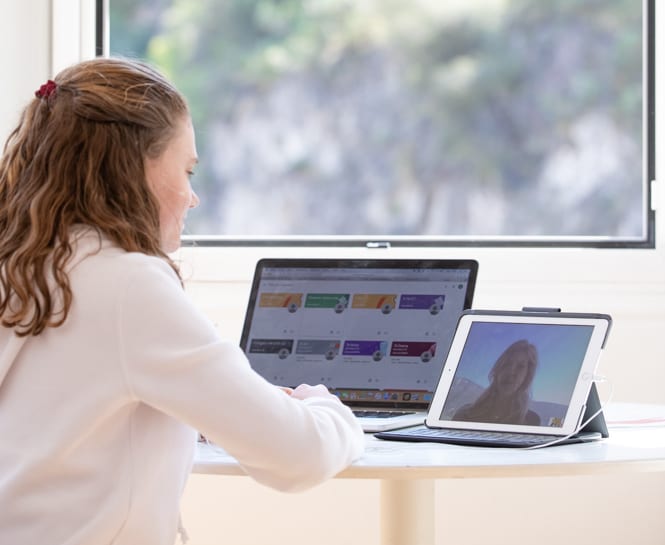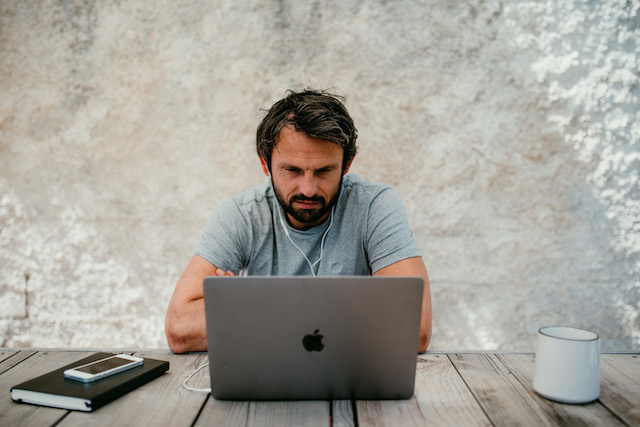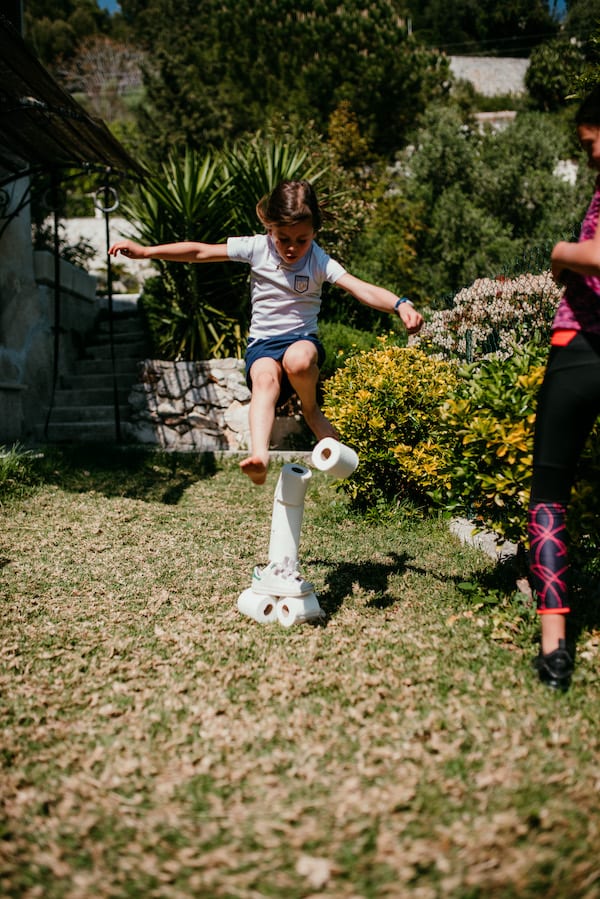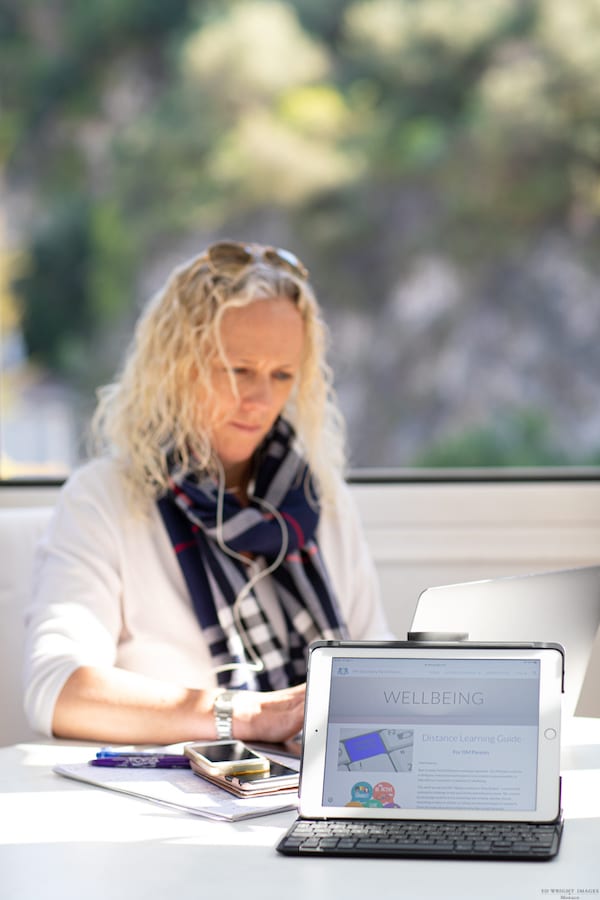Never before have schools been put to the test as when lockdown was ordered. Educators, students and parents were forced into a new way of teaching and learning. For many, this has been challenging, but the students at the International School of Monaco have thrived.
To understand why, Monaco Life spoke to James Wellings, Head of Secondary School and Deputy Director, and Lindsay Mackenzie-Wright, Assistant Director and Head of Wellbeing.
Monaco Life: ISM was quick off the mark when the lockdown was ordered because the school had already been developing digital methods for education. How much of an impact did that have?
James Wellings: For about 12 months prior to the lockdown we had really thought about how online learning should look and how modern tools and technologies support learning. We opted to use Google Suite for Education, which is utilised by thousands of schools across the world, and we have our own digital coach on the staff whose job it is to support and train the teachers in how to use these tools, and to observe students in the classroom and how they were interacting. So, a lot of that work had already been done by the time the crisis started.
When it did hit, we knew we had the provisions to provide a good programme. We rewrote the entire timetable to work better round a home learning environment. We added a video conference element to the lessons for human interaction, and a classroom feature to enable work to go from the student to the teacher, and from the teacher to the student.
Feedback is incredibly important, so we use voice feedback. Students, for example, can highlight a paragraph, press a button, and listen to my feedback on that paragraph. Tools like that have been really powerful and have helped the students to stay engaged.
We also have live feedback so I can watch the students completing their work in real time. As a teacher, I have 15 documents on my screen and I can see, at that moment, who is doing well and who is struggling and needs assistance.
Then we have hybrids, so in some lessons we will be watching what they’re doing electronically, but in other lessons students still want to write things with a pen. Technology is not going to replace everything, but it really adds a new dimension to learning.
How do you keep students engaged and motivated?
It is important to mix things up. With regards to developing knowledge, the way we test that and keep them engaged is through quizzes and things like competitive online games – the gamification of knowledge.
When developing understandings and skills, students can still collaborate with each other through sidebar conversations and “chat”. They can organise subjects as though it were on a piece of paper, so if I want them to analyse a certain event and put things in order of significance, they can move it around on the screen and do a voice over at the same time to explain why they are doing it. Keeping kids engaged is all about variety and pace.
We have also tailored the programme to fit the age groups, for example we only rolled out video conferencing for the younger students when we were sure it would work for them, and be safe to do so. For the very youngest children, in Early Years, we have further adapted what works for them. In their case, we have many exciting tools that don’t involve too much screen time.
Were you surprised at how well the students have adapted to distance learning?
They have been nothing short of incredible. Our attendance stands at 97%, so the levels of engagement are just amazing. Some have actually made more progress, because they’ve got the time and environment to concentrate, without the distraction of a classroom. There are others who have struggled a little bit of course, but the vast majority of our students have been remarkable and I have been absolutely amazed by it. It has certainly raised questions around education and how we might do things in the future.
So, when things eventually do return to normal, do you see the school incorporating more digital education?
I think we have probably fast forwarded it by about nine to 10 months. For me, as a leader within the school, the challenge is to make sure people don’t leave these new skill sets at the door and fall back into default behaviours within the school. Obviously, this has been a crisis and it has been very challenging on many different levels, but if we are going to find a positive in it, then it might be that it has fast forwarded our ability to use technology to really enhance the education of our students.
What we are now going to see is teachers planning different ways to incorporate technology and to raise levels of engagement and feedback.
There is no doubt that digital is the future – something which Monaco places an enormous emphasis on with its Digital Transition programme. Do you feel the students have learnt important lifelong skills which will prepare them for life in the real world?
Yes, because it has created a real-world situation whereas we would otherwise have had to create a fake situation.
Privacy and security are obviously major issues. How is the school dealing with that?
Digital citizenship and safety have been a big emphasis for many years now at ISM, because young people see themselves as a different person in the digital world than they do in the real world. We also have a full Personal Social Health Education programme which touches on digital citizenship and safety. We have our digital coach, and we are looking at bringing in a whole new curriculum built on common-sense media which will be credited.
Wellbeing remains at the heart of what we are trying to do at the school.
And this is where we move on to you Lindsay as head of wellbeing at ISM. How have you found the students’ wellbeing during this challenging time?
Lindsay Mackenzie-Wright: Wellbeing is such a big part of what we do, and it goes hand in hand with the academic progress that our students make. This has continued with the distance learning programme. Our teachers are checking in on a daily basis, not just from an academic point of view, but on how they are doing. Our high attendance rate is important in the realms of wellbeing because it means we have that daily contact with the students. We have also set up dedicated wellbeing website pages, with everything from articles for parents and activities for students, to physical challenges, kindness challenges, innovation challenges and the like. We even have an online choir, and recently held a virtual sports day which was a huge success.
How do you monitor wellbeing from a distance?
We look at how students are interacting through class and their engagement, so if there is a student who is not engaging in class or in particular elements of the distance learning programme, this is usually a flag for us that there is a wellbeing issue. Immediately we call home so we don’t let it cascade, and that communication with student, home and school is key when they are in school but even more key now they are outside of school. I would say we have probably made more daily contact with parents during the distance learning than ever before.
A child might just want to talk after a lesson, and we have very strong student-teacher relationships, which continue to be nurtured and developed through the distance learning programme.
We also look after the wellbeing of our staff, so they have people to talk to if needed.
We put an enormous emphasis on the fact we are a school community and it is not because we went into lockdown that we lost any of that, in fact I think we became stronger as a result.
Now the lockdown has been lifted, there are still very few students returning to class. Does this pose a new set of concerns or issues that need to be dealt with?
I think the return rate is so low, at least in part, because of how successful our distance learning programme is.
From the student feedback we can see how well they are embracing it, with the exception of a small few of course. They like it so much that they may want to continue with this way of schooling. Because now the lockdown has lifted, the social aspect is no longer an issue, they can see their friends after school hours. So, the problem is – what is the future? And we don’t have an answer for that just yet. The younger students, however, are longing to get back to their normal routine.
What have you learnt most from this experience?
I think we underestimate how resilient young people are and how easily they actually embrace challenge if they have the right support around them. This generation has not been a generation of complainers, they have completely adjusted to a new way of life. In fact, they have embraced it.
"The crisis has changed the future of education"



